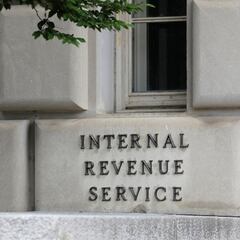Third Stimulus Check: with the ninth batch sent, how many are left?
On 12 May, the IRS announced that they had sent another batch of stimulus checks that included around 1 million payments.


The IRS has now sent about 165 million payments, totaling more than $388 billion. The most recent set of checks were sent to about one million people, half of which went to individuals who recently submitted a tax return giving the IRS the information needed to send the payment. The remaining checks, known as “Plus-up Payments,” and are supplemental payments “for people who earlier this year received payments based on their 2019 tax returns but are eligible for a new or larger payment based on their recently processed 2020 tax returns.”
How were the checks distributed?
In this ninth batch of payments, half were sent through direct deposit and the remaining checks were sent in paper form.
How many checks are left to distribute?
The American Rescue Plan allocated a little over four hundred dollars to send direct payment. The IRS has now distributed approximately $388 billion in checks or about 97% of the expected payments.
What do I do if I still have not received my stimulus check?
The IRS is asking all those who believe they qualify for an Economic Impact Payment to submit a tax return this year. Even if families do not normally have to file their taxes, this year they should as with that information, the IRS is able to determine if individuals or families qualify to receive a check.
Americans experiencing homelessness have free options to claim the 3rd Economic Impact Payments and the Recovery Rebate Credit, if they don’t normally file taxes with #IRS and haven’t received any payments yet: https://t.co/zj7biIl3gK #COVIDreliefIRS pic.twitter.com/SJLdvkMpEM
— IRSnews (@IRSnews) May 12, 2021
There are also other benefits that those in the US could qualify for including “tax credits such as the 2020 Recovery Rebate Credit, the Child Tax Credit, and the Earned Income Tax Credit.” To receive these additional credits and benefits, a tax return must be filed.
The tax filing deadline is 17 May, but extensions are available.
What other benefits are available this year?
2020 Recovery Rebate Credit
The first and second rounds of stimulus checks were sent out in April and December 2020 respectively. If your second stimulus check was not delivered, you can file a Recovery Rebate Credit on your 2020 tax return.
If you didn’t get the Economic Impact Payments or qualify for more than you received, watch an #IRS video to see if you can claim a Recovery Rebate Credit when you file taxes this year. https://t.co/djk5pi7HaU #COVIDreliefIRS
— IRSnews (@IRSnews) May 10, 2021
Child Tax Credit
The American Rescue Plan made major changes to the payment quantity and structure of the Child Tax Credit. First, the income minums were removed. Before, a family needed an income of at least $2,500 to receive partial benefits and could only redeem the full value of the tax credit if they made at least $30,000 a year. Under its current form, the IRS will send payments to families with a combined income of $150,000 for married taxpayers who file jointly, $112,500 for heads of household, and $75,000 “for all other taxpayers.”
Those eligible can expect to receive payments in July.
Earned Income Tax Credit
Related stories
The Earned Income Tax Credit, which targets low- and moderate-income workers is a refundable tax credit that reduces the amount of taxes filers owe or can be collected as a refund. For those without children, the American Rescue Plan increased the maximum credit from $538 to just over $1,500.

